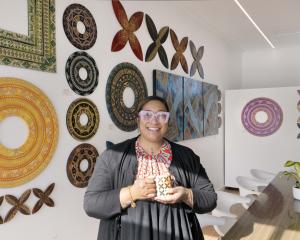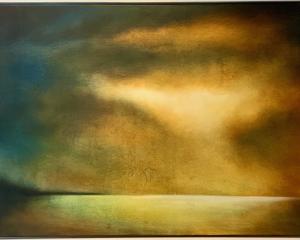Mo Tatou: The Ngai Tahu Whanui Exhibition (Otago Museum)
"Mo Tatou" is a major touring exhibition of the history, crafts, and culture of Ngai Tahu.
It has arrived in the iwi's traditional rohe, and is a must-see for anyone with any interest in this region's Maori heritage.
The exhibition contains works of many forms and media, mixing historical artefact with modern pieces which have drawn on these tribal forms and traditions.
It takes inspiration not only from Ngai Tahu craft and art work, but also from the strong threads of ancestry and belonging which link the works and the people to the land.
Several audiovisual displays reflect this, with their double emphasis on the cultural and sociopolitical aspects of what it means to be Ngai Tahu.
The sense of belonging to one large family is reinforced by photographs of tribal elders and links with marae.
Among the modern works on display, there is a range of connectedness with tradition, ranging from the fine greenstone work of Otene Rakena and traditional carving of Takuta Ferris to the neo-expressionist canvas of Peter Robinson.
That artists are drawing on their roots but prepared to venture into their own wilds is both clear and encouraging.
"Mo Tatou" is accompanied by a series of presentations and talks throughout the course of the exhibition.
2010 Otago Wildlife Photography Competition (Otago Museum)
The 2010 Otago Wildlife Photography Competition throws up an impressive range of works by local amateur photographers.
More than 1000 images were entered, and about 120 of the best are presented, arranged by category and age group.
The judges must have had a difficult job to pick the winners, as the standard is uniformly excellent.
A real eye-opener is the sheer photographic ability of the younger age group (under 15 years), and this is indicative of the strong future for photography in the region.
It feels wrong to pick out individual works for mention, though there were distinctly images I found myself returning to, notably finely composed and timed plant images by Alysha Bloxham and Steve Kerr, Lewis Anderson and Nicholas Bailey's wry animal portraits, a poignant double-portrait by Anna Verhoef, and human impact works by Ana Rakonjac, Stacey Bryant, Mikayla Stoop, and Emily Cannan which move fluently into the realm of photojournalism.
Despite this, there can be little quibbling with the fine work which gained the top awards, Jan Scott's jury prize-winning portrait of an elephant seal, and John Burke's excellent bird photograph, Guess who?, which claimed for him the title of Otago wildlife photographer of the year.
Pretty Vacant (Dunedin Public Art Gallery)
"Pretty Vacant" presents a series of works from the Dunedin Public Art Gallery's permanent collection, and is designed to complement the gallery's other current modern New Zealand art exhibits.
The exhibition takes its title from a Sex Pistols song, which is entirely fitting.
As with 1970s punk, the art's aim is to entertain and make its audience think while simultaneously shocking with the realisation of content; to outwardly eschew earlier traditions and styles while purposefully using, acknowledging, and reinventing them with a do-it-yourself aesthetic.
A perfect exemplar of this approach comes from Seraphine Pick's untitled work, a portrait with deliberate classical stylings of a young woman wearing headphones.
The conflation of the ancient with the modern is jarring yet entirely appropriate.
Similar purposeful shocks are delivered by Michael Parekowhai's colossal Bambi bookend, Seldom is herd and Saskia Leek's caravan installation.
It is also appropriate that one double-edged work in the exhibition - Out to lunch, by Ronnie van Hout - stands on its own merits while coincidentally echoing the Sex Pistols' lyrics.
Many of the works in the exhibition will be fairly well known to regular gallery attendees, but it is still worth seeing them, especially in the context of the exhibition alongside works striving for the same aims.











